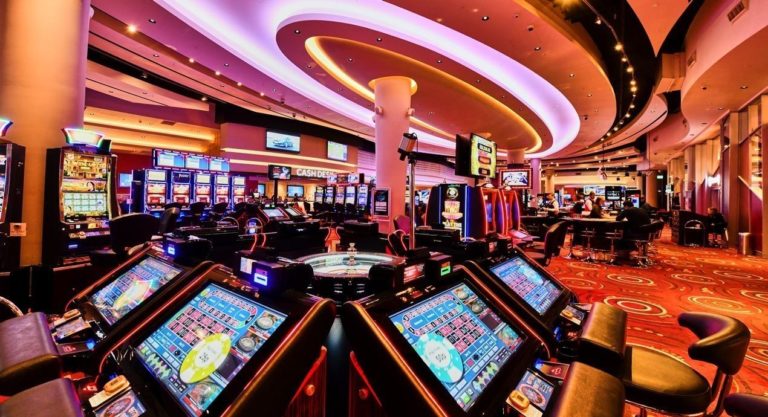In what way Casino Games Use Color and Layout to Entice Participants
admin
- 0

In a vibrant and thrilling world of gaming establishments, where fortune and strategy intertwine, color and aesthetic play a critical role in drawing in gamblers. From the moment players step inside a casino or log into a gaming platform, they are immersed in a sightly feast that grabs their attention and entices them to explore more. Vivid colors, engaging graphics, and creative layouts are carefully crafted to create an environment of thrill and expectation, ultimately improving the gaming encounter.
As players navigate through the dynamic landscape of casino games, they encounter a variety of designs that not only serve visual purposes but also influence emotions and choices. Colors like red and yellow symbolize riches and luck, while soothing blues and emeralds can create a more relaxed environment. Grasping how these elements function together allows casinos to create an welcoming and energizing atmosphere that encourages players to engage with the games, spend additional time at the tables, and boost their general enjoyment.
The Study of Color in Casino Games
Tint plays a critical role in the creation of gaming experiences, shaping players’ emotional states and behaviors. Lively and bold hues, such as crimson and yellow, are often used to ignite enthusiasm and capture attention. These hues create a feeling immediacy and energy, encouraging gamblers to participate more readily with the game. By intentionally selecting tints, designers aim to inspire feelings of joy and expectation, which can enhance the overall game experience.
Different shades also have psychological connotations that can influence how gamblers perceive their chances of victory. For case, green is frequently associated with good fortune and abundance, making it a frequent choice in games like the roulette wheel and poker setups. This association can result gamblers to feel more positive and assured in their play, ultimately encouraging them to wager more. Understanding these connections allows game developers to design environments that enhance player enjoyment and loyalty.
Moreover, the interface of gaming interfaces often utilizes color gradients and differing shades to instruct players’ actions. For case, successful outcomes may be accentuated with bright, opposing colors, creating a visual cue. This technique strengthens positive outcomes and promotes repeated gameplay. By leveraging the science of color, casinos can create activities that not only captivate gamblers but also maintain them interested and dedicated in their play experience.
Creative Elements that Attract Players
The aesthetic appeal of casino games is largely influenced by the use of vibrant colors. Bright and striking colors are deliberately chosen to create an inviting atmosphere that captures interest. For example, crimson and golden hues often signify good fortune and prosperity, which is why they are common in the palettes of gaming machines and game surfaces. These colors not only draw players in, but they also stir emotions associated with excitement and anticipation, enhancing the overall gaming experience.
In addition to color, the aesthetic and layout of casino games play a crucial role in player attraction. Games are designed to be user-friendly, ensuring that players can easily understand the guidelines and gameplay. User-friendly interfaces, along with captivating graphics and motion, help maintain gamer interest and encourage extended play sessions. The tactile elements, such as the feel of the controls and the audio of the games, also add to a comprehensive sensory experience that keeps players immersed.
In conclusion, thematic elements in game design can significantly influence gaming decisions. Many gambling games are inspired by popular culture, myths, or adventure themes, featuring symbols and characters that connect with players. lixi88 These themes create a sense of engagement and relatability, making each game feel distinct. When players feel a bond to the theme, they are more likely to opt for that game over others, leading to increased participation and excitement within the gambling environment.
Case Studies: Successful Casino Slot Designs
One prime example of successful casino game design is the popular slot machine series themed around popular movies. Games such as those based on the The Wizard of Oz and Game of thrones utilize bright colors and high-quality graphics to engage players in recognizable narratives. The application of lively visuals and entertaining sound effects grabs the focus of players, establishing an psychological connection to the theme. This approach not only fosters longer play but also improves the overall gaming experience, leading to increased player retention.
Another notable case is the application of color psychology in table games like blackjack and roulette. Casinos often design these games with dark reds and greens, colors traditionally linked with luck and wealth. For instance, the green felt on a blackjack table provides a calming effect, while the red accents in the wheel invite anticipation. This intentional use of color helps to establish an inviting atmosphere that motivates players to participate, addressing their psychological impulses and enhancing their enjoyment.
Finally, online casino games that feature social features and lively, colorful designs have experienced remarkable success in engaging players. Games like Zynga’s Poker and Slot-O-Mania leverage vivid colors and playful animations to forge an inviting online environment. The inclusion of leaderboards, community sharing options, and in-app rewards encourages competition and community, drawing players in for longer sessions. Such designs not just make the games visually enticing but also highlight social connectivity, a crucial factor in player retention and engagement within online casino environments.